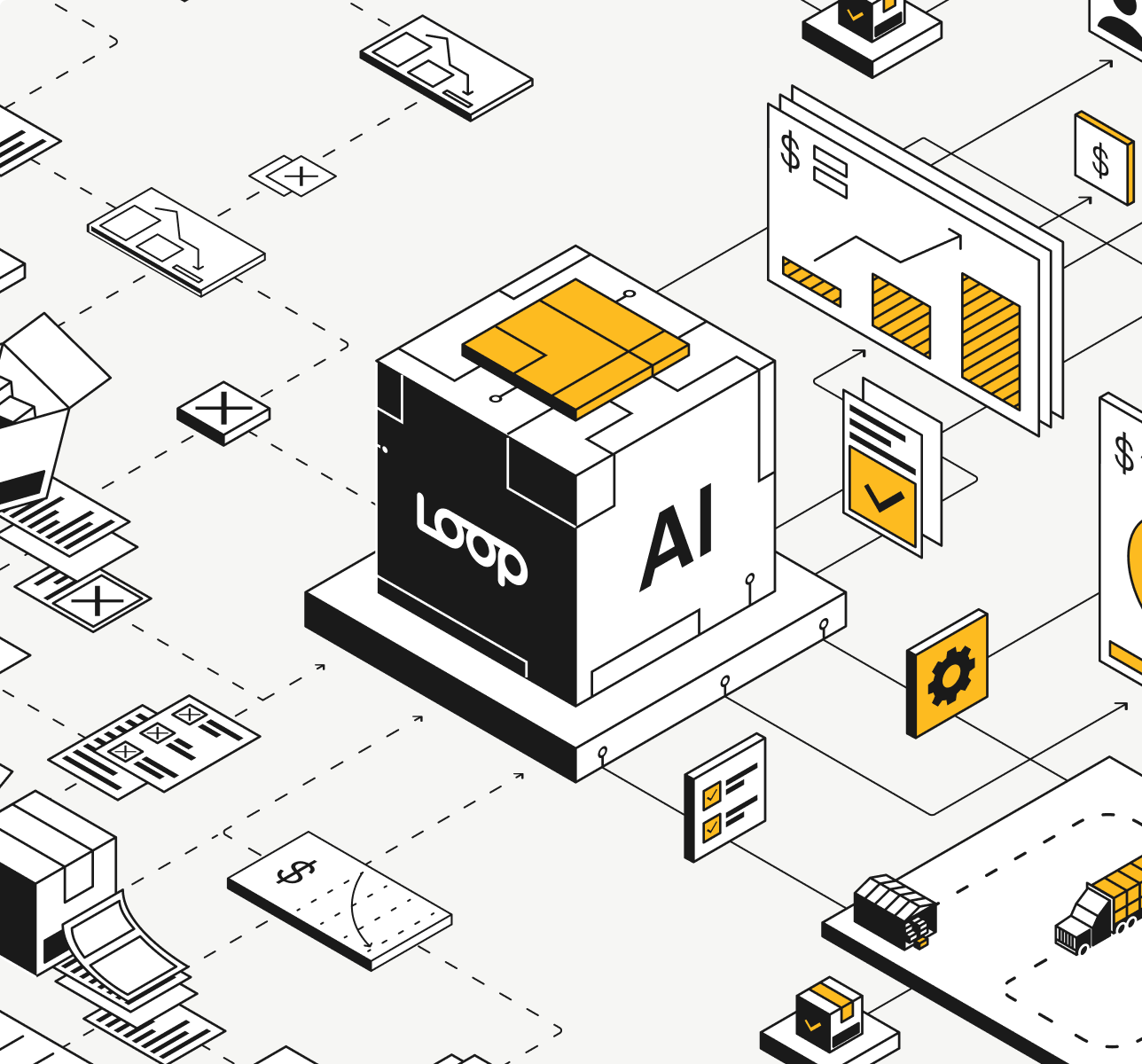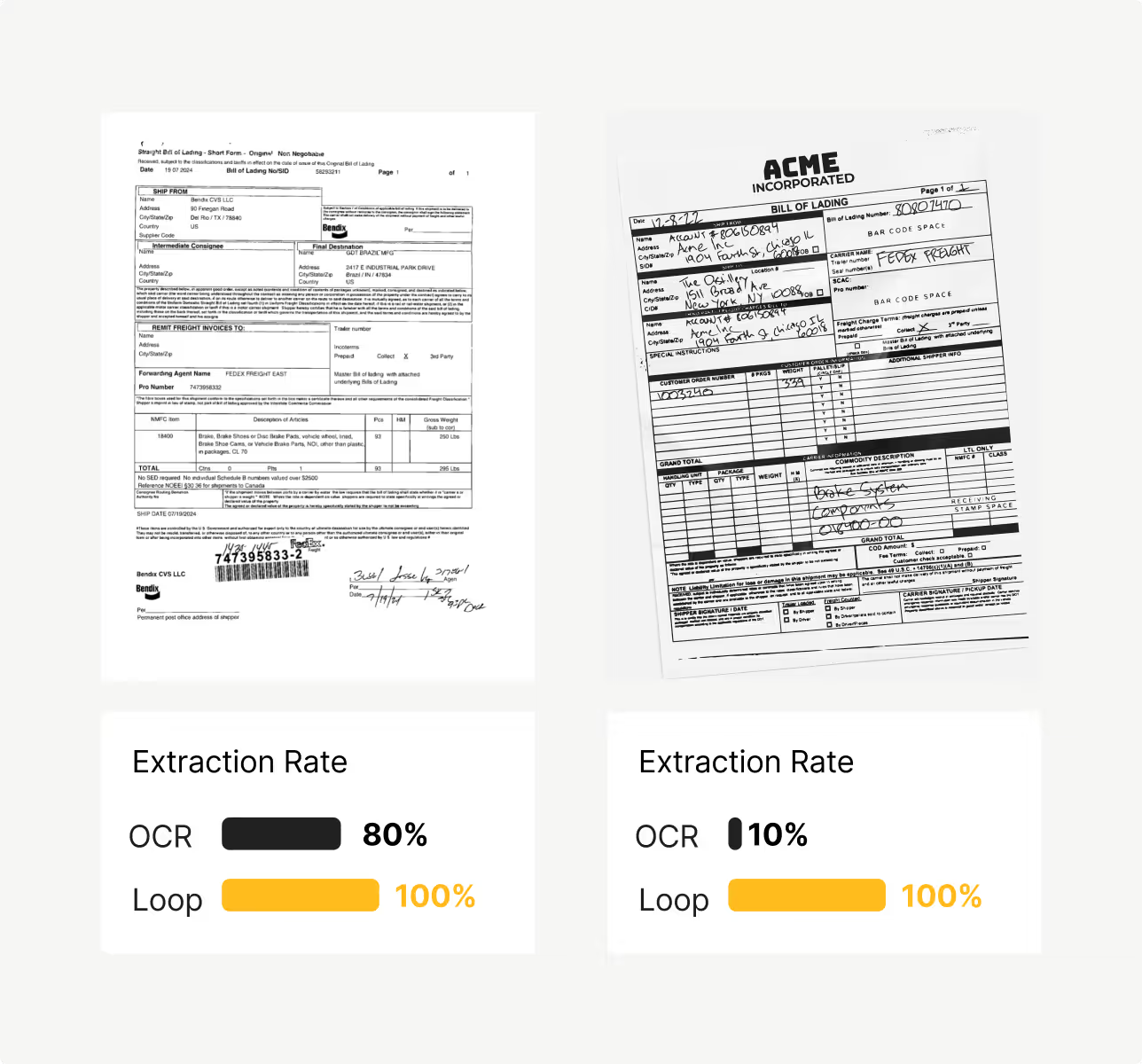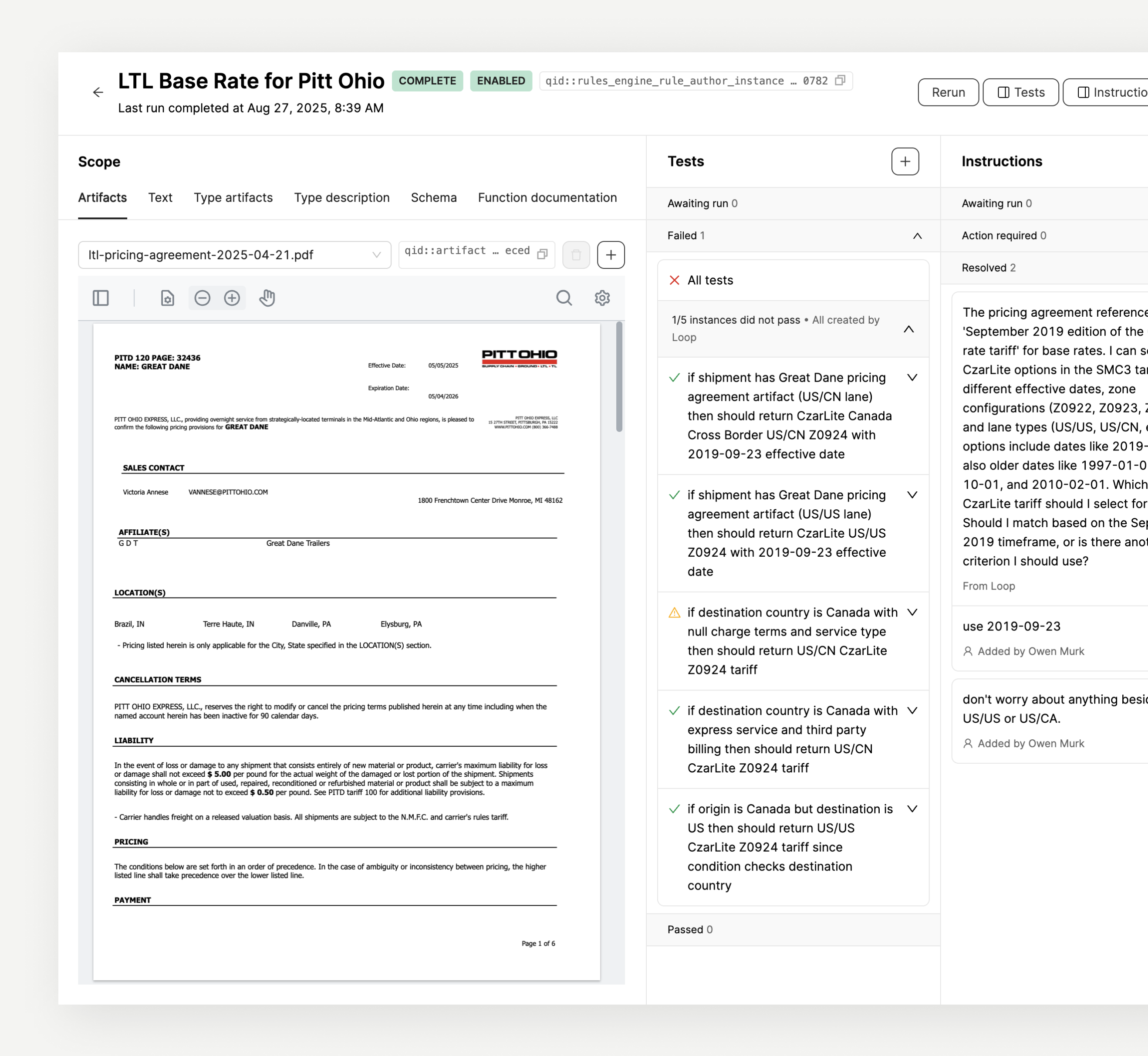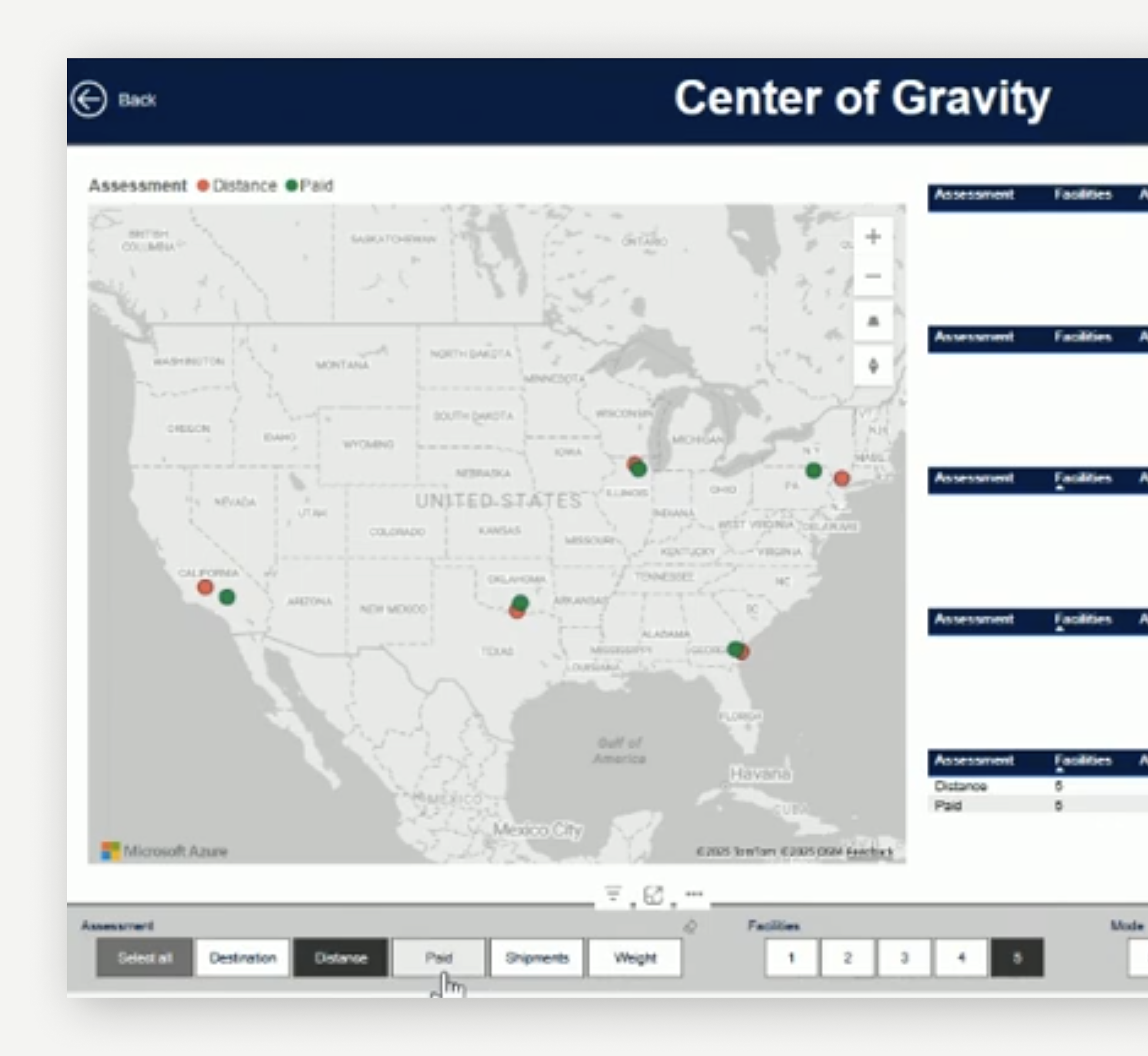Real AI for real supply chain problems
For Loop, AI isn't a feature; it's our foundation. We built the first AI-native platform, with custom models and AI agents, to fix messy logistics data. This approach delivers what legacy systems can't: comprehensive data capture, leading data quality, and a path to end-to-end automation.


































Loop AI is not a lightly-tuned ChatGPT model
Bolting generic AI onto a legacy FAP system won’t fix the fundamental data problem. That’s why we built an AI-native platform that can transform chaotic transportation data from any source—from PDFs to EDI—into a trustworthy foundation that can fuel automated audits of not just your costs but your core data and performance as well.

AI-native platform by design
Our AI-native platform was built to solve the core data problem. It creates a "digital twin" of your network, turning chaotic data into a powerful strategic asset.

Innovative AI models
We built and trained our own AI models, like DUX™, using millions of logistics documents. This technology gives us unparalleled understanding of your supply chain data.

Focus on data quality
Our specialized AI models extract, normalize, and link all your data, creating a single, trustworthy source of truth that eliminates exceptions and manual data cleansing.

True automation and insights
A pristine data foundation enables >99% touchless automation. It moves your team from reactive work to proactive, data-driven decisions that drive strategic growth.
From chaos to data clarity
Loop's AI-native platform transforms messy transportation documents into a pristine, structured data asset. Led by DUX™, our logistics-trained foundation model, we achieve over 99% touchless automation without errors.
Unlike generic tools, our custom AI reads the whole picture—including fine print, stamps, and handwritten notes—to extract a virtually unlimited number of fields. We turn your most unreliable data sources into a powerful foundation for automation and intelligence, reducing invoice processing time from days to hours.


Creating a single, trustworthy source of truth
Extraction is just the beginning. Our specialized AI models get to work normalizing and connecting your data into a unified whole. Proprietary embedding models understand that "123 Main St" and "One Two Three Main" are the same place, creating a single, canonical record.
AI agents then automatically link every related document—from the bill of lading to the proof of delivery to the final invoice—creating a complete, trustworthy, and auditable picture for every single shipment. This eliminates data silos and provides true end-to-end visibility.
Business logic to governance policies in hours
Stop waiting in IT queues to implement critical business rules. Loop’s AI agents can help translate plain-English contract terms and cost allocation logic into production-ready, fully tested code.
Loop’s unique use of AI agents allows you to audit invoices against a new carrier contract in under 12 hours, a process that takes legacy systems up to two weeks. Gain unmatched agility to adapt to changing business needs, ensuring 100% of your freight bills are rated with perfect accuracy from day one, without implementation delays.


Proactive decisions with predictive insights
A pristine data foundation unlocks a new level of strategic intelligence. Loop’s powerful data science tools move you beyond simple reporting to proactive, forward-looking analysis.
Leverage your unified data to power predictive cost modeling, perform Center of Gravity (CoG) analysis to identify optimal facility locations, and run network efficiency simulations to discover hidden savings. We don’t just clean your data; we empower you to use it to make smarter, faster, and more confident decisions that drive your business forward.
Built-in beats bolted on
We get much higher accuracy building and training our own logistics-focused AI models when compared to generic API based models, like ChatGPT, that cannot handle supply chain tasks with enough precision and speed.

Human in the loop approach
When we build a new model, we always construct and train it with three humans involved so we can validate its performance.

Multi-model decision making
To arrive at a decision, Loop utilizes multiple models, general-purpose models and fine-tuning models to ensure there is consensus.

Atomic task system
A system that breaks down goals into smaller, manageable atomic tasks so our platform can automate work.

Computer visions models
Our models that take in image inputs and convert them to text outputs.

Large language learning models
Our homegrown models that take in text inputs to understand their context and meaning to create outcomes.

Data categorization
Identify each document type to validate it and ensure compliance.

AI-driven extraction
Configure your extraction and validate with human oversight to ensure accuracy.

Data standardization
Normalize data from every carrier regardless of how they name their service-levels, detail their line-hauls, or write “fuel surcharge”... “fuel,” “FL Sur”, “FS,” etc.
Frequently asked questions

Loop AI is built for the supply chain’s domain and language, so it can contextualize, categorize, extract, and standardize each data point to automate work and uncover insights. Our homegrown models can ingest all supply chain information regardless of systems, structures, standards, formats, terms, quality, etc.
Most importantly, it is trained on your data so it becomes more accurate and efficient as your network evolves and grows. Loop AI constructs a comprehensive, yet, flexible view so it can automate your work and analyze your business at any level.
At Loop, we use a multi-model approach including large language models (LLMs), computer vision and humans to come to a consensus so you always have accurate data.

True logistics AI is contextualized to your supply chain so you can get a comprehensive view of your supply chain and cost data. Breaking down this data into fundamental components means you can automate your work and uncover insights, at any level. Whether it’s uncovering a facility that needs new scale or adjusting service-levels to keep performance, but cut costs.

Data acquisition: flexible integrations enable our AI to centralize data regardless of source and format.
Data management: logistics-AI categorizes, extracts, and standardizes all shipment and invoice data.
Data transformation: easily link shipment data across carriers and documents to ensure consistency and accuracy.
Audit and pay: automate 99% of your invoice audit and pay with 100% financial accuracy.
Analytics: Loop offers you out of the box and customizable reports so you can uncover insights at an invoice, team, carrier, and network level.

We use a combination of computer vision and large language models (LLMs) to extract data from documents supporting an invoice. Our models are always trained by humans in their early days, as they become more mature, we introduce a multi-model consensus approach. Results are fed back into the model for improved accuracy over time.
Additionally, our human customer success team is available to help you throughout your journey at Loop. Their supply chain expertise means you can rely on them to answer any questions your AR, AP or transportation teams may have.

We have a team of stellar AI engineers who are continually investing in new ways to expand and improve Loop's AI solutions. Learn more about making sense of AI in a rapidly evolving supply chain here.
Unlock profit trapped in your supply chain.
Chat with our team of supply chain and automation experts to get started today.






.svg)







